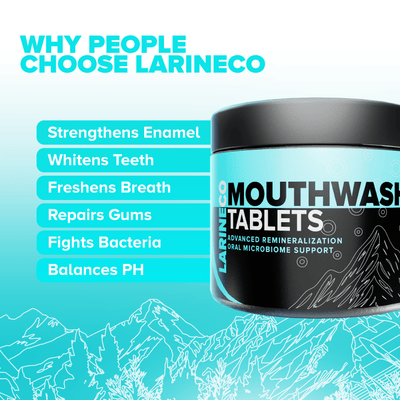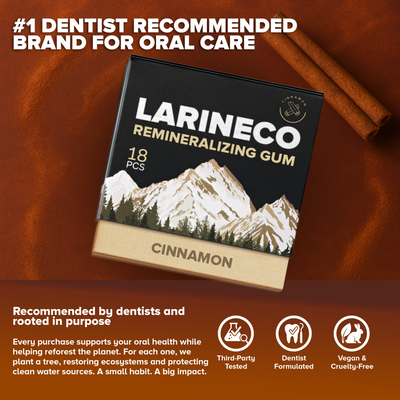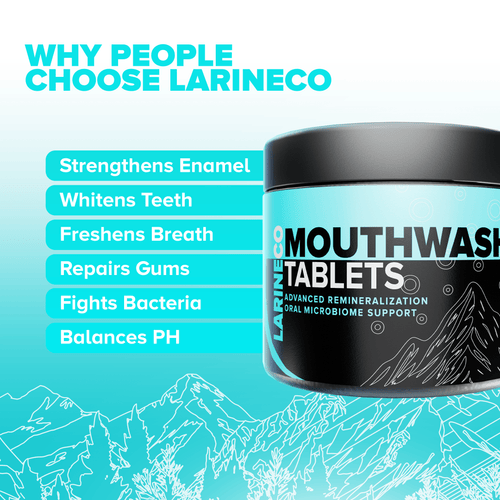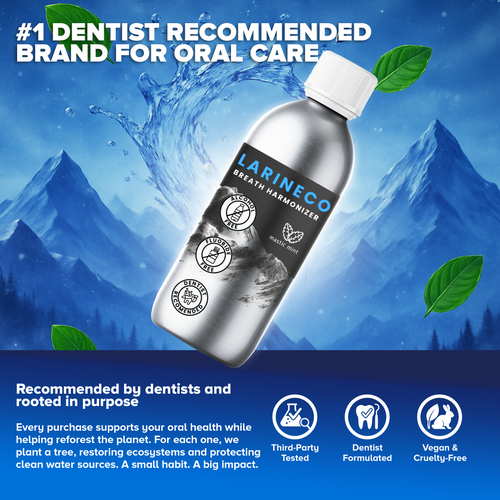Remineralizing Gum and Toothpaste: Complementary Uses
Why Remineralization Matters for Oral Health
Remineralization is your body’s natural defense against early tooth decay. It involves replenishing essential minerals like calcium and phosphate that are lost from your enamel due to acidic foods, plaque, or poor hygiene. When effective, it can halt or even reverse the early stages of cavity formation without drilling.
Hydroxyapatite is the primary mineral that makes up over 90% of tooth enamel. In oral care products, synthetic nano-hydroxyapatite mimics natural enamel and binds to microscopic defects on the tooth surface. This not only strengthens enamel but also makes teeth smoother, whiter, and more resistant to sensitivity.
Saliva is more than just moisture; it’s your mouth’s built-in repair system. It constantly bathes your teeth in minerals and helps maintain a healthy pH balance, which is essential for remineralization to occur. Without adequate saliva flow, the remineralizing process slows down, leaving teeth more vulnerable to erosion and decay.
Read: Role of Saliva in Enamel Repair
How Toothpaste Supports Daily Remineralization
Hydroxyapatite toothpaste works by delivering enamel-strengthening minerals directly to the surface of your teeth. As you brush, the hydroxyapatite particles fill in micro-cracks and bind to the enamel, helping to repair damage, reduce sensitivity, and protect against future demineralization.
Brushing twice daily removes plaque and food debris, reducing the acid load in the mouth. This routine allows remineralizing agents like hydroxyapatite to stay in contact with your enamel long enough to have a restorative effect. Regular brushing also keeps pH levels in check and supports healthy saliva production.

Toothpaste only works during and shortly after brushing. Once you rinse, most of the active ingredients are washed away. That means for most of the day, your teeth are left unprotected, especially between meals, when acid attacks are most common. People with dry mouth or frequent snacking habits may need additional support beyond brushing.
How Remineralizing Gum Complements Toothpaste
Chewing gum naturally increases saliva flow, which plays a crucial role in protecting your teeth throughout the day. Saliva helps wash away food particles, neutralize acids, and deliver calcium and phosphate ions essential for remineralization especially when you're not brushing.
Unlike toothpaste, remineralizing gum provides a mobile, discreet way to reinforce enamel during the day. Each chew delivers a controlled dose of hydroxyapatite, allowing your teeth to benefit from enamel-strengthening minerals even when you're away from your bathroom sink.

Most acid attacks occur after eating. Remineralizing gum helps neutralize mouth acids post-meal by stimulating saliva and delivering pH-buffering ingredients. This creates a more stable environment for your enamel and reduces the window of demineralization risk between brushing sessions.
Key Differences Between Gum and Toothpaste
Mode of Action: Mechanical vs. Chewing-Activated
Toothpaste works through mechanical brushing, helping remove plaque and deliver active ingredients like hydroxyapatite that helps in reminearlization, directly to the enamel. Remineralizing gum, on the other hand, is chewing-activated, stimulating saliva and gradually releasing enamel-supporting minerals throughout the day. They work differently, but together they offer continuous protection.

Frequency of Use: 2x Daily vs. Multiple Chewing Sessions
Brushing is recommended twice a day, morning and night, as the foundation of oral hygiene. Remineralizing gum steps in between those times after meals, snacks, or whenever you're on the go to fill in the gaps and keep your enamel supported when brushing isn't possible.
Convenience and Compliance in Real Life
Let’s face it: life gets busy. While brushing requires time, space, and a toothbrush, chewing gum is quick, portable, and easy to incorporate into a daily routine. It's a practical way to stay consistent with enamel care, especially for kids, commuters, or anyone with a packed schedule.
When to Use Each for Maximum Enamel Support
Brushing After Waking and Before Bed
Toothpaste lays the groundwork for enamel health. Brushing in the morning helps remove overnight bacterial buildup and prepares your teeth for the day ahead. Brushing before bed clears away food particles and acids from the day, giving remineralizing ingredients like hydroxyapatite time to work while you sleep.
Chewing Gum After Meals, Snacks, or Acidic Drinks
After you eat especially sugary or acidic foods, your mouth’s pH drops, making enamel more vulnerable. Chewing remineralizing gum immediately after meals or snacks helps neutralize acids, stimulate saliva, and deliver minerals when your teeth need support the most.
Ideal for Orthodontic Patients or Dry Mouth Sufferers
Braces make it harder to brush thoroughly, and a dry mouth reduces your natural defense: saliva. In both cases, remineralizing gum is a helpful companion. It reaches areas toothbrushes might miss and boosts moisture levels, providing continuous support between brushings.
Can You Use Both Together? Absolutely.

Toothpaste and remineralizing gum aren’t competing options; they work better together. Brushing delivers a concentrated dose of hydroxyapatite directly to your enamel, while chewing gum helps maintain a healthy oral environment between brushings. Used in tandem, they create a more consistent remineralization cycle throughout the day.
What Dentists Say About Combined Strategies
Many dental professionals support a layered approach to enamel care. Brushing remains essential for plaque removal and overnight protection, but adding remineralizing gum helps fill the gap between morning and evening routines. It’s especially helpful after meals, when brushing isn’t always convenient but your enamel is most vulnerable.
Choosing the Right Remineralizing Products
Ingredients to Look For in Toothpaste
When selecting a remineralizing toothpaste, look beyond the usual fluoride label. Key ingredients to support daily enamel repair include:
-
Nano-hydroxyapatite (n-Ha): Nano-Hydroxyapatite is a biocompatible mineral that mimics natural tooth enamel and helps rebuild microscopic damage.
-
Calcium phosphate compounds: Support enamel strength and neutralize acid.
-
Mild abrasives: Gently polish teeth without causing enamel erosion.
-
No harsh detergents: Avoid SLS (sodium lauryl sulfate), which can irritate the mouth and interfere with remineralization.

Ingredients to Look For in Remineralizing Gum
For on-the-go enamel support, chewing gum should do more than just freshen breath. Look for:
-
Nano-hydroxyapatite: Helps redeposit minerals onto the enamel surface during chewing.
-
Xylitol: A natural sweetener that reduces harmful bacteria and promotes saliva flow.
-
Calcium lactate or phosphate: Delivers essential minerals to support the remineralization process.
-
No sugar or acidic flavorings: These can undo the benefits.

Why Larineco Toothpaste and Gum Are Smarter Together
Larineco toothpaste and gum work in harmony to provide comprehensive enamel care throughout your day. The toothpaste’s blend of nano-hydroxyapatite, lactobacillus, sorbitol, menthol, bamboo charcoal powder, and natural mint flavor cleans, remineralizes, and supports a balanced oral microbiome while offering gentle whitening and freshness.
Complementing this, Larineco gum delivers nano-hydroxyapatite for ongoing enamel repair, paired with organic xylitol and erythritol to inhibit harmful bacteria. The natural chewing base made from chicle, mastic, acacia, myrrh, and spruce gums provides antimicrobial benefits and a satisfying chew, while calcium bentonite clay, eggshell powder, and an organic terpene blend further support oral health by neutralizing acids and delivering essential minerals.
Together, the toothpaste and gum form a powerful duo that extends enamel protection beyond brushing, helping you maintain stronger, healthier teeth all day long.
Summary: Unlocking the Full Potential of Remineralization
Brushing with a remineralizing toothpaste lays the essential groundwork by cleaning teeth, delivering key minerals like nano-hydroxyapatite, and supporting a healthy oral environment. It’s the first step in repairing and protecting enamel effectively.
Chewing remineralizing gum complements brushing by stimulating saliva flow, maintaining a neutral pH, and continuously delivering enamel-strengthening minerals between brushings, especially after meals and snacks when your teeth need it most.
Regular use of both toothpaste and gum helps create a continuous cycle of enamel repair and protection. This consistent care is what leads to lasting improvements in tooth strength, sensitivity reduction, and overall oral wellness and Larineco takes care of that.
For a complete, science-backed enamel care routine, consider trying Larineco toothpaste and remineralizing gum designed to work together seamlessly to keep your smile healthy throughout the day.










